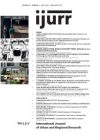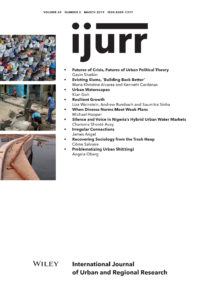This article examines how the politics of managing global catastrophic risks plays out in a stereotypically ‘vulnerable’ megacity in the global South. It analyses the disproportionate impact of the 2009 Ondoy floods on Manila’s underclasses as a consequence of the failures and partial successes of twentieth‐century developmentalism, in the course of which the Philippine state facilitated a highly uneven distribution of disaster risk. It argues that the selective interpretation and omission of facts underpinned a disaster risk management (DRM) strategy premised on the eviction of slum dwellers. Through the lens of aesthetic governmentality we analyse how elite and expert knowledge produced a narrative of the slum as the source of urban flood risk via the territorial stigmatization of slums as blockages. We also show how the redescription of flood risk based on aesthetics produced uneven landscapes of risk, materializing in the ‘danger’/‘high‐risk’‐zone binary. This article characterizes the politics of the Metro Manila DRM strategy by introducing the concept of resiliency revanchism: a ‘politics of revenge’ (Smith, 1996) predicated on the currency of DRM and ‘resiliency’, animated by historically entrenched prejudicial attitudes toward urban underclasses, and enabled by the selective interpretation, circulation and use of expertise.
Details
Written by:
Maria Khristine Alvarez & Kenneth Cardenas
Digital Object Identifier (DOI)
10.1111/1468-2427.12757
About DOI

